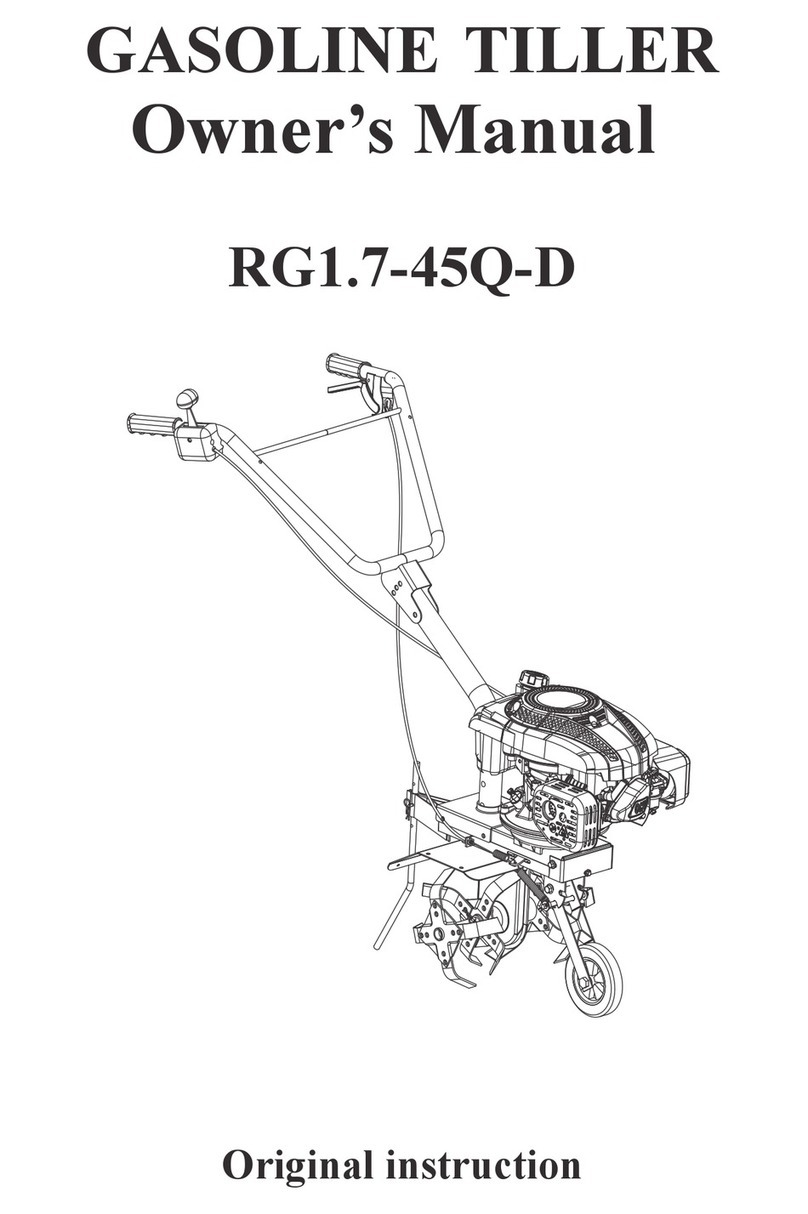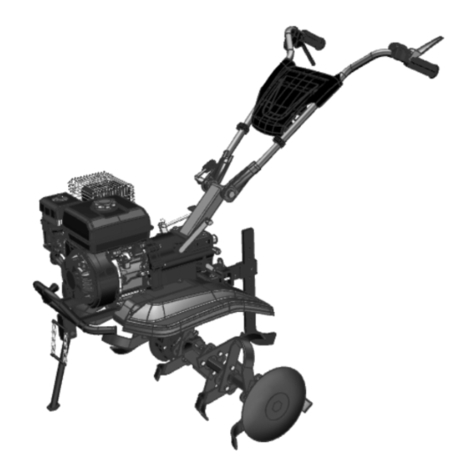3
2. SAFETY INSTRUCTION
1) Training
a) Read the instructions carefully. Be familiar with the controls and the
proper use of the equipment;
b) Never allow children or people unfamiliar with these instructions to use
the machine. Local regulations can restrict the age of the operator;
c) Never work while people, especially children, or pets are nearby;
d) Keep in mind that the operator or user is responsible for accidents or
hazards occurring to other people or their property.
2) Preparation
a) While working, always wear substantial footwear and long trousers. Do
not operate the equipment when barefoot or wearing open sandals;
b) Thoroughly inspect the area where the equipment is to be used and
remove all objects which can be thrown up by the machine;
c) WARNING – Petrol is highly flammable:
- Store fuel in container specifically designed for this purpose;
- Refuel outdoors only and do not smoke while refueling;
- add fuel before starting the engine. Never remove the cap of the fuel
tank or add petrol while the engine is running or when the engine is hot;
- if petrol is spilled, do not attempt to start the engine but move the
machine away from the area of spillage and avoid creating any source of
ignition until petrol vapours have dissipated;
- replace all fuel tank and container caps securely;
d) Replace faulty silencers;
e) Before using, always visually inspect to see that the tools are not worn or
damaged. Replace worn or damaged elements and bolts in sets to preserve
balance.
3) Operation
a) Do not operate the engine in a confined space where dangerous carbon
monoxide fumes can collect;
b) Work only in daylight or in good artificial light;
c) Always be sure of your footing on slopes;
d) Walk, never run with the machine;
e) Exercise extreme caution when changing direction on slopes;
f) Do not work on excessively steep slopes;
g) Use extreme caution when reversing or pulling the machine towards you;
h) Do not change the engine governor settings or overspeed the engine;
i) start the engine carefully according to manufacturer instructions and with
feet well away from the tool(s);
j) Do not put hands or feet near or under rotating parts;
k) Never pick up or carry a machine while the engine is running;





























